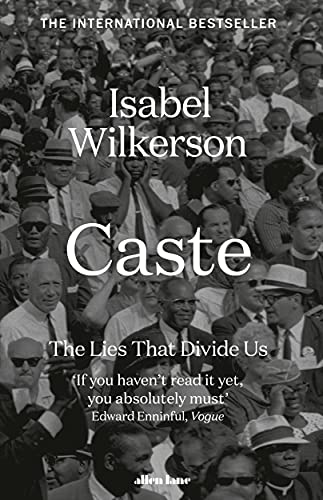“The hierarchy of caste is not about feeling or morality. It is about power—who holds it and who does not. It is about resources—who is deemed worthy of them and who is not, who gets to control them and who does not. It is about respect, authority, and the presumption of competence—who receives them and who is denied.”
— Isabel Wilkerson
Why I Chose This Book
Caste is a concept often associated with India, where the caste system has existed for centuries. So when a Western author like Isabel Wilkerson writes extensively about caste, it naturally piqued my interest. I wanted to understand how the idea of caste translates in the Western context—how it has shaped societies like America and continues to influence daily life.
About the Book
Wilkerson argues that caste is a man-made social hierarchy that transcends class and race. In the book, she primarily explores racism in the United States and draws parallels between the caste system in India, racial hierarchy in Nazi Germany, and race-based discrimination in America. At its core, caste, white supremacy, and racial superiority are all mechanisms to assert control and maintain dominance by certain groups over others. These systems endure because those in power still believe they are inherently superior.
The author delves into American history to explain how caste—rooted in presumed racial inferiority—was constructed. Race, as she points out, is a social invention based on superficial physical features and cultural practices—like skin color, language, and even hair texture. African slaves brought by European colonizers and Native Americans were seen as inferior and thus relegated to the bottom of the social ladder. This constructed hierarchy, much like caste, dictated one’s value and place in society.
Wilkerson writes that caste is not just a structure—it is a psychological trap. It imprisons the dominant group in a false sense of entitlement and confines the oppressed to roles defined by others.
She outlines three major caste systems in human history: India’s enduring caste structure, Nazi Germany’s now-defunct but brutal racial order, and America’s race-based hierarchy. What unites them is the deliberate dehumanization of those at the bottom. Often justified as divine or natural, these systems restrict access to education, rights, and opportunities for marginalized communities to keep them subjugated.
Using powerful historical and contemporary examples, the author illustrates how caste in America—rooted in race—has been used to suppress Black and Native American communities while reinforcing white dominance. The stories she shares are haunting, highlighting the cruelty and injustice inflicted on these groups—acts so inhumane, they make one question the perpetrators’ humanity.
Wilkerson’s writing is compelling and deeply thought-provoking. With each chapter, she forces us to confront uncomfortable truths. In the end, she calls for a collective awakening—urging us to see beyond superficial differences and recognize each other simply as human beings.
This is a vital book for anyone seeking to understand the deep-seated realities of caste and its global manifestations.
